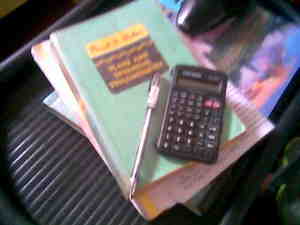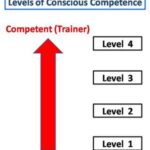I finished my last Abstract Algebra with (Q,*). What I really meant is (Q, *). Why can’t 0 be in the group? Well, because 0 * x = 1 has no solution. Likewise, I meant (C, *) and (R, *).
I believed we also mentioned that a collection of n by n matrices is a group with matrix multiplication. Interestingly, this group is non-commutative.
Ok, those are all great examples, but let’s get to something interesting.
Start with the group (C, *). We already know a handful of subgroups of this group. Now, think about {1,-1}. Could this possibly be a subgroup? So far, we’ve had groups with an infinite number of elements, could there be finite groups?
Well, ({-1,1},*) has an identity. Its obviously commutative and associative. Each element has an inverse (-1 * -1 = 1; 1 * 1 =1). Is it closed? Well, 1 * -1 = -1, -1 * -1 = 1, 1 * 1 = 1, and that’s all there is to attempt, so yes it is closed. Therefore, {-1,1} is a group, and a subgroup of the rationals.
Now, how about {1, -1, i, -i}? Likewise, its obviously commutative and associative. I guess we should figure out if it is closed. We already know about 1 and -1. So i * i = -1, i * -i = -(-1) = 1, i * 1 = i, i * -1 = -i. Through similar reasoning, we can see that {1, -1, i, -i} is closed. We know that 1 is the identity. What about inverses? 1 and -1 are there own inverses. Now i * -i = -i * i = 1, so i and -i are inverses. So according to our definition of the group, ({1, -1, i, -i}, *) is a group.
Lets look at some more finite groups. Consider the integers Z, and a subgroup like (6). That is, -6, 0, 6, 12, … This is called the “factor group” Z/(6). Now think about 1 + (6) which yields 1, 7, 13, 19, … This is called a coset of the factor group. If you think about it, there are essentially 6 cosets of the factor group Z/(6): {0 + (6), 1 + (6), 2 + (6), 3 + (6), 4 + (6), 5 + (6)}. It is easy to see that 6 +(6) = 0 +(6). For sake of easy notation, we call this Z6 = {0,1,2,3,4,5}.
If I brought it up, then you probably have figured that this is a group. (I already called it a factor group…) Anyway, let’s verify this. Now, 0 is our identity. Its associative and commutative. Our questions are whether or not there are inverses and closure.
Well, 1 + 5 = 6, but we know that 6 = 0, so 1 and 5 are inverses. Similarly, 2 + 4 = 0 and 3 + 3 = 0. So we now know that each element has an inverse, but what about closure? Well, let’s take 2 + 5 for example. 2 + 5 = 7, but 7 is an element of 1 + (6). So 2 + 5 = 1. Similarly, 4 + 4 = 2, 5 + 5 = 4, and if we constructed an addition table we could see that (Z6, +) is in fact closed and thus a group.
I think we could also see that Z7, Z99, Z58, etc. are all groups. A perfectly logical question would be if Z6 is a subgroup of Z12? In Z12, 5 + 4 = 9 + (12) (…,9, 17, 33, …), but in Z6 5 + 4 = 3 + (6) (…,3,9,15, …). It is easily seen that Z6 is not a subgroup of Z12. However, Z12 does have subgroups ({0,2,4,6,8,10} for example).
Up to this point, we’ve just discussed groups with either numbers, matrices, or sets of multiples. Groups aren’t limited to numbers, though.
Take a square. Now lets think about the collection of symmetries of the square. A symmetry is either a rotation or a flip where the exact same space is occupied by that shape (an informal definition). This collection of symmetries would be {I(not moving the square), R90 (rotation 90 degrees), R180, R270, FH (flip about a horizontal line through the middle), FV, FNE (flip through the diagonal running northeast), FNW}.
This collection may be hard to see without a diagram, but unfortunately I am limited to words. It easy to cut out a small square out of a piece of paper and label its vertices a,b,c,d. You can build a multiplication table with this collection to verify that each element has an inverse, and it is closed. We can now see that this is a group. It is called the Dihedral group D4.
Similarly, we can construct D5 with a pentagon, D6 with a hexagon, and etc.
Examples of groups are not limited to what we have seen. I just thought I’d mention some of them that I thought were interesting. If you’re interested, you should look up permutation groups as well.


